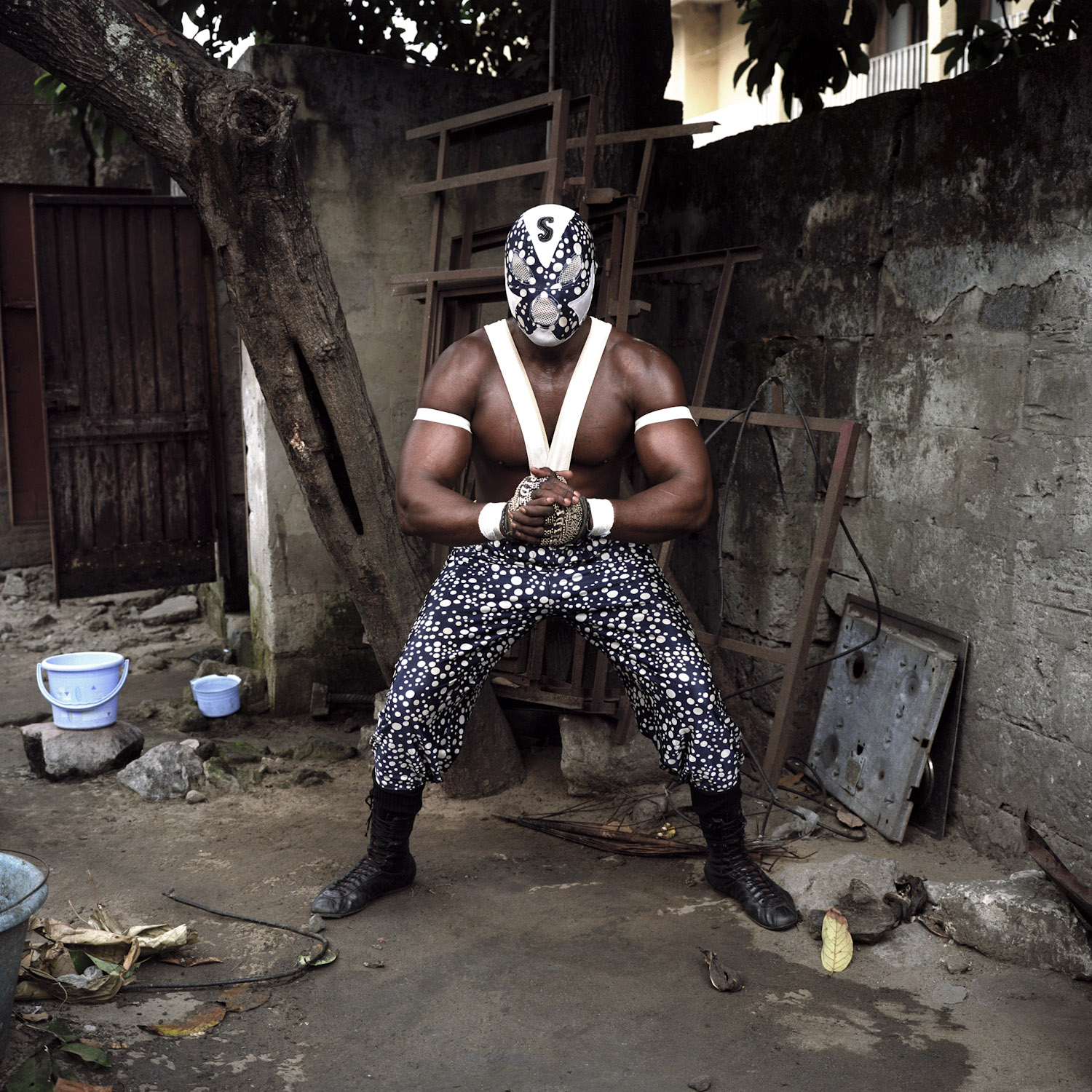
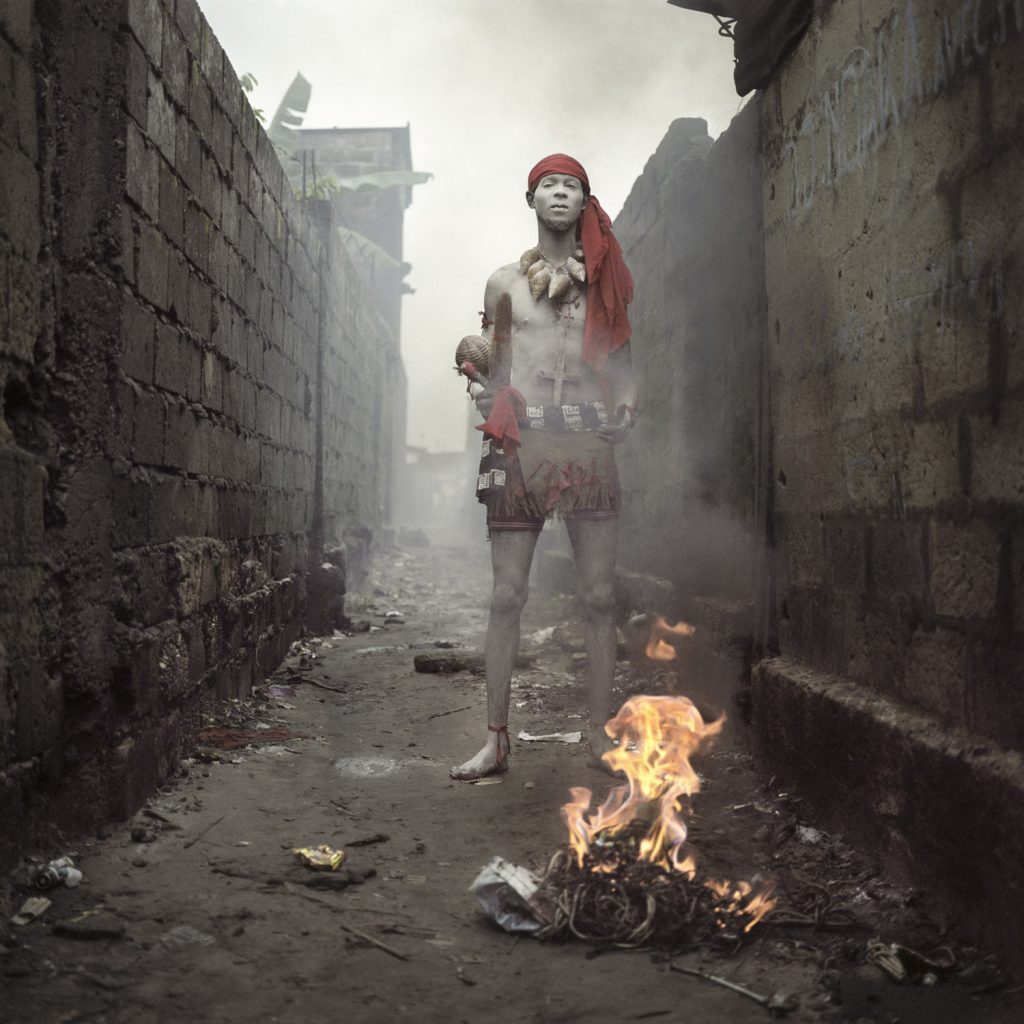
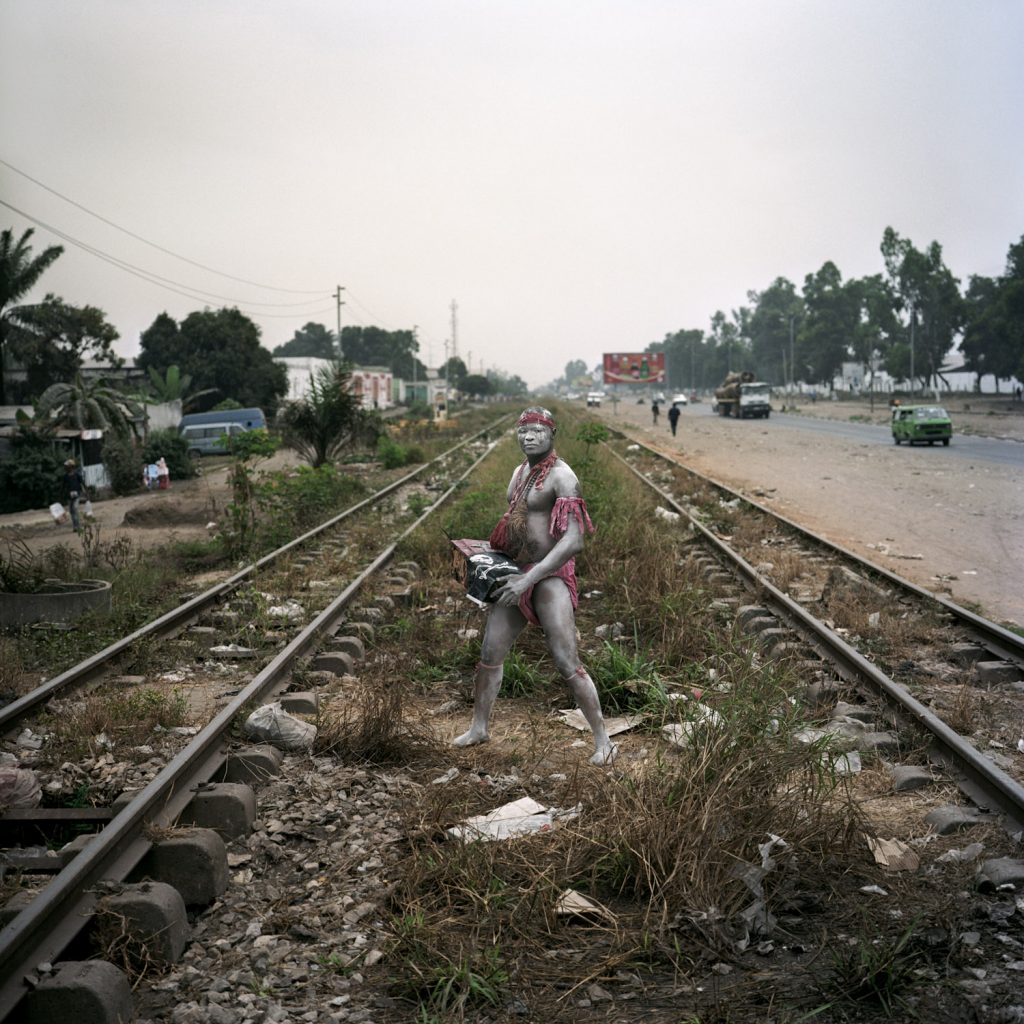
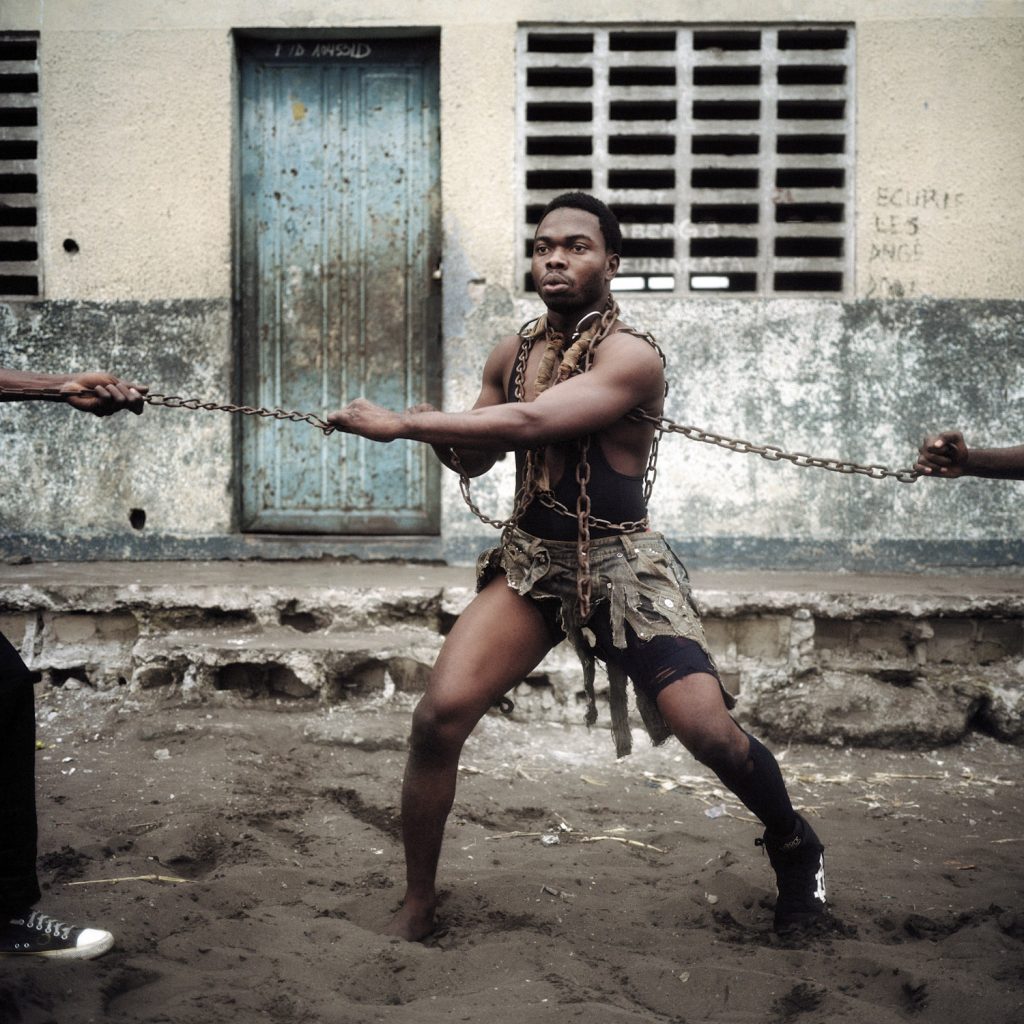
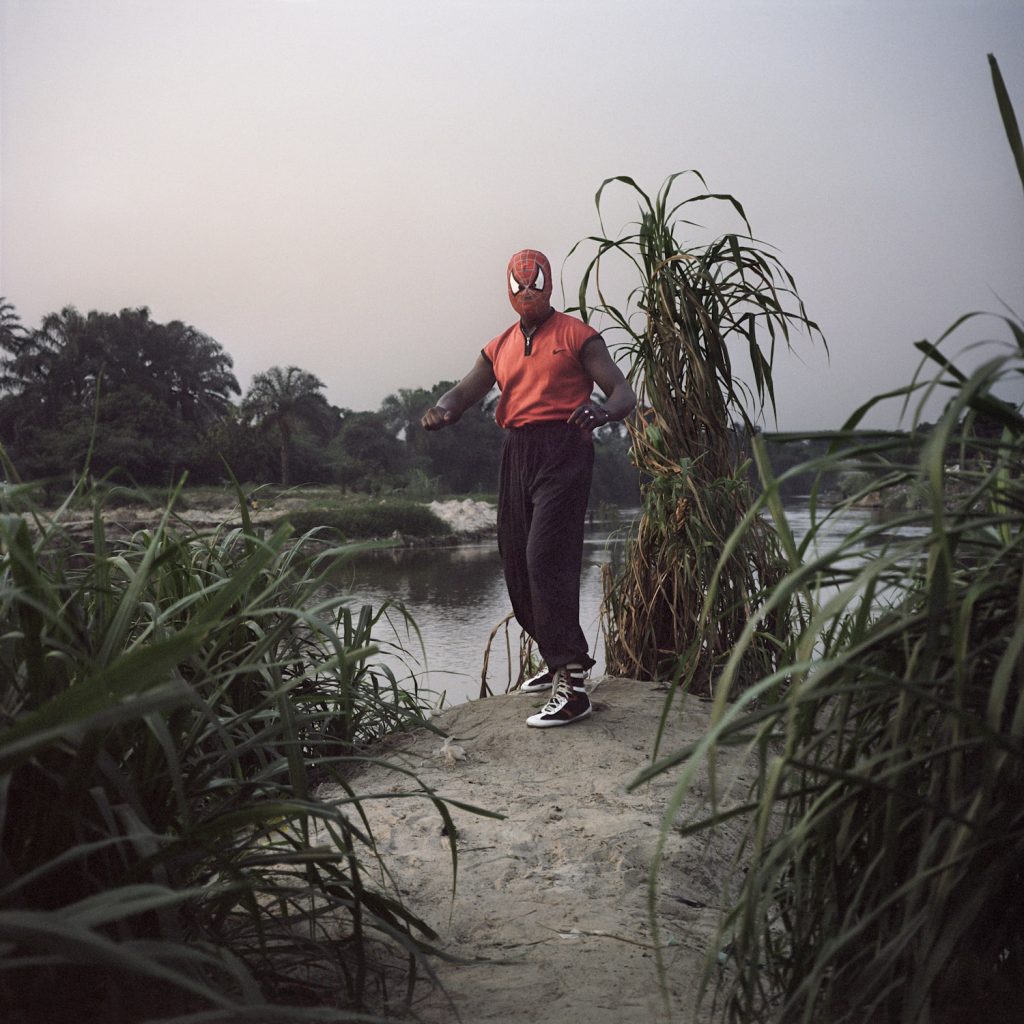
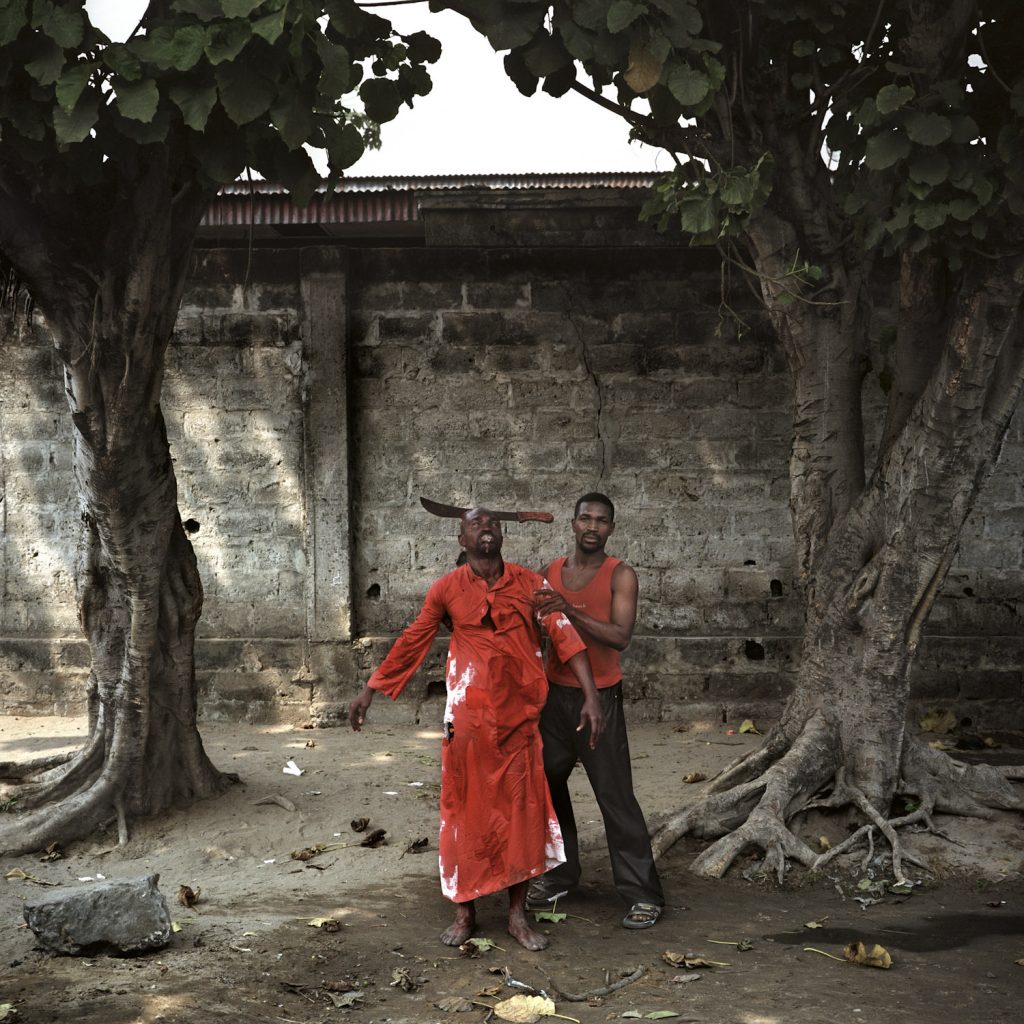
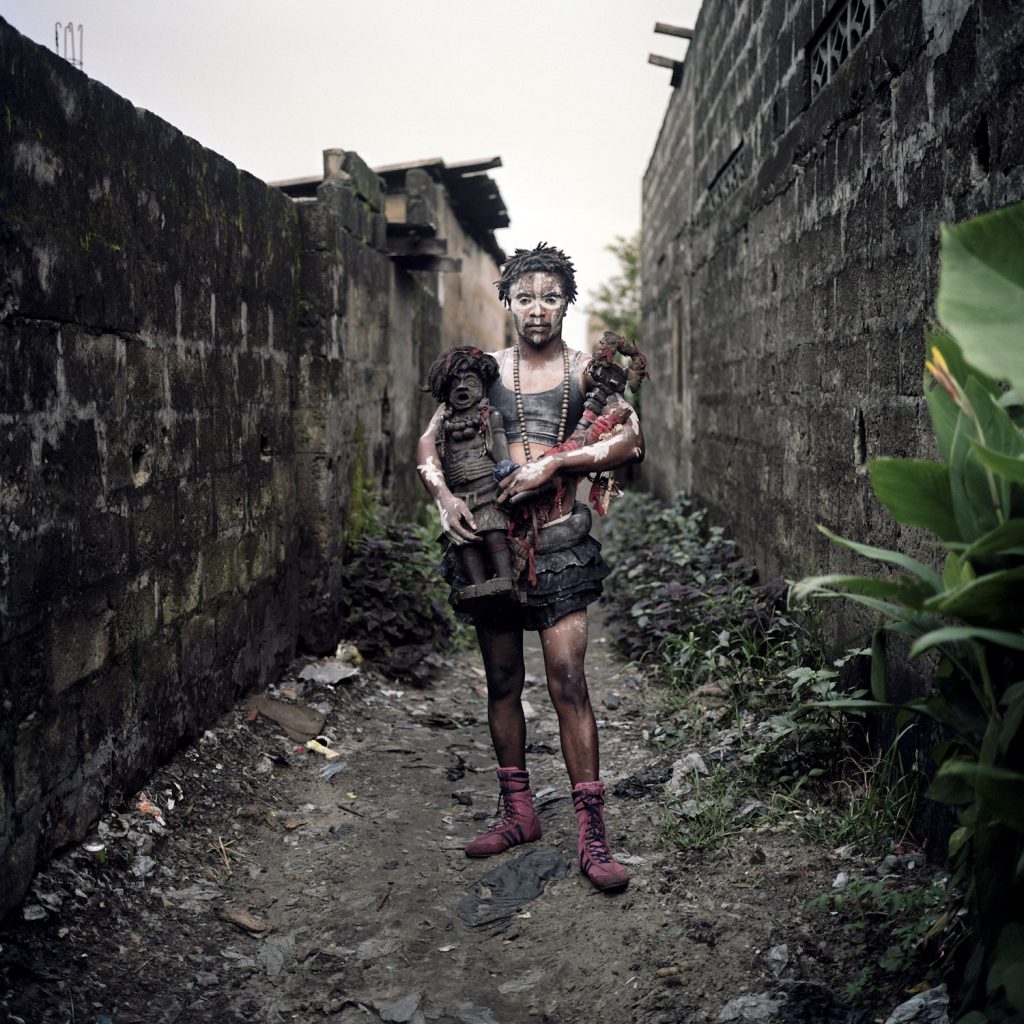
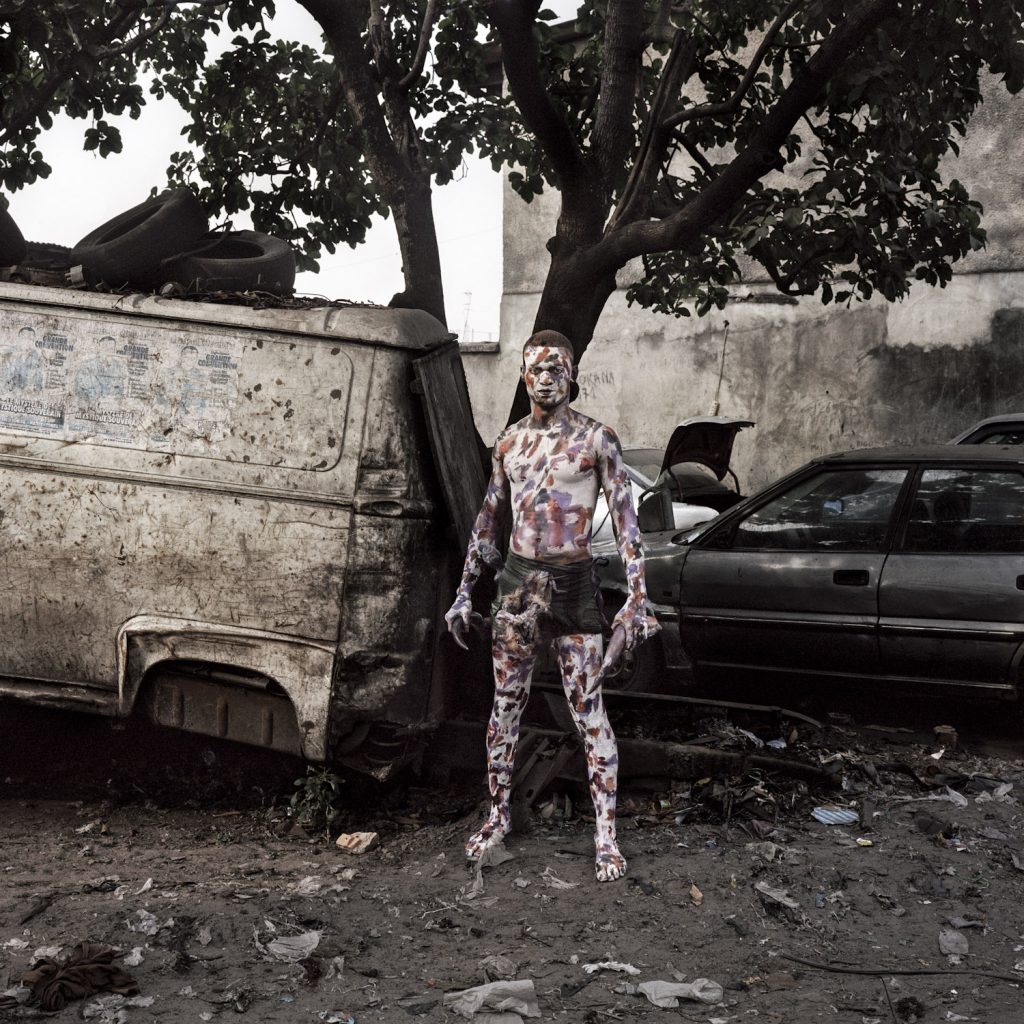
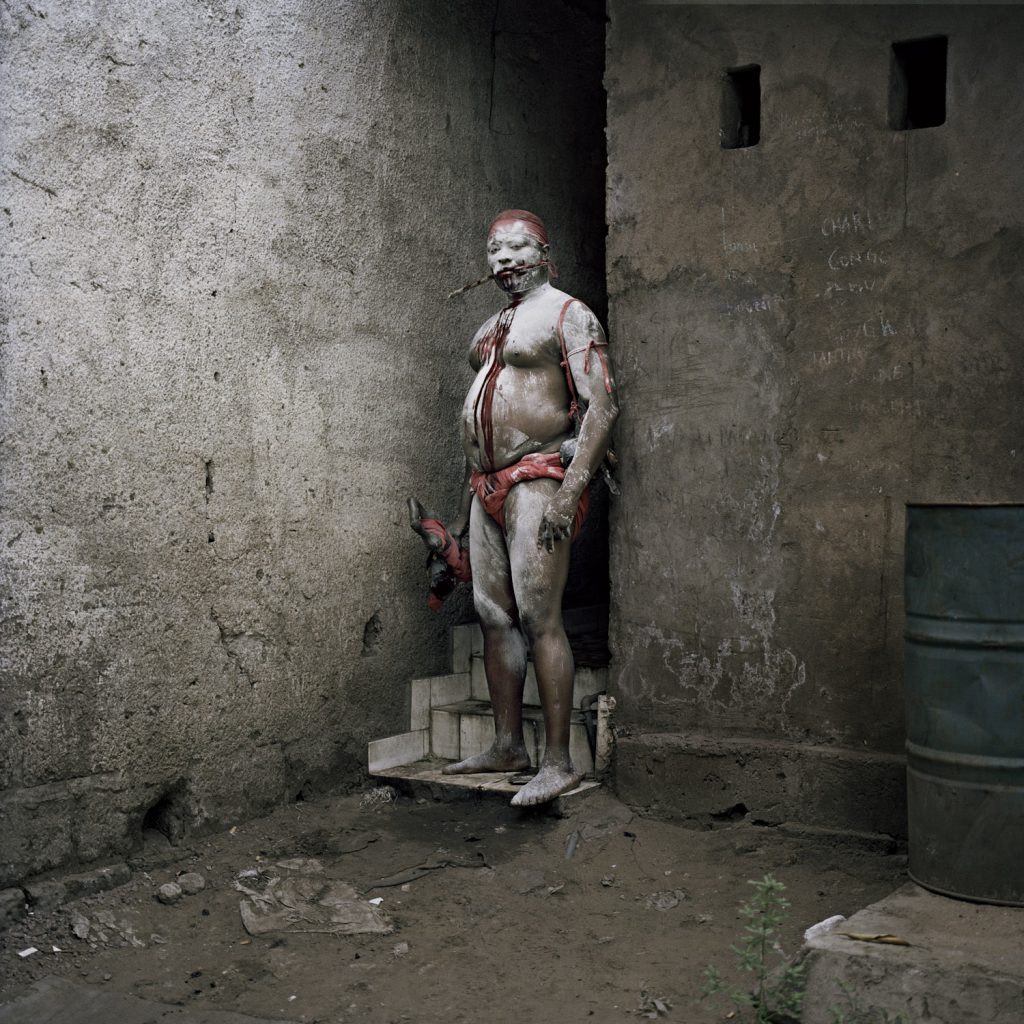
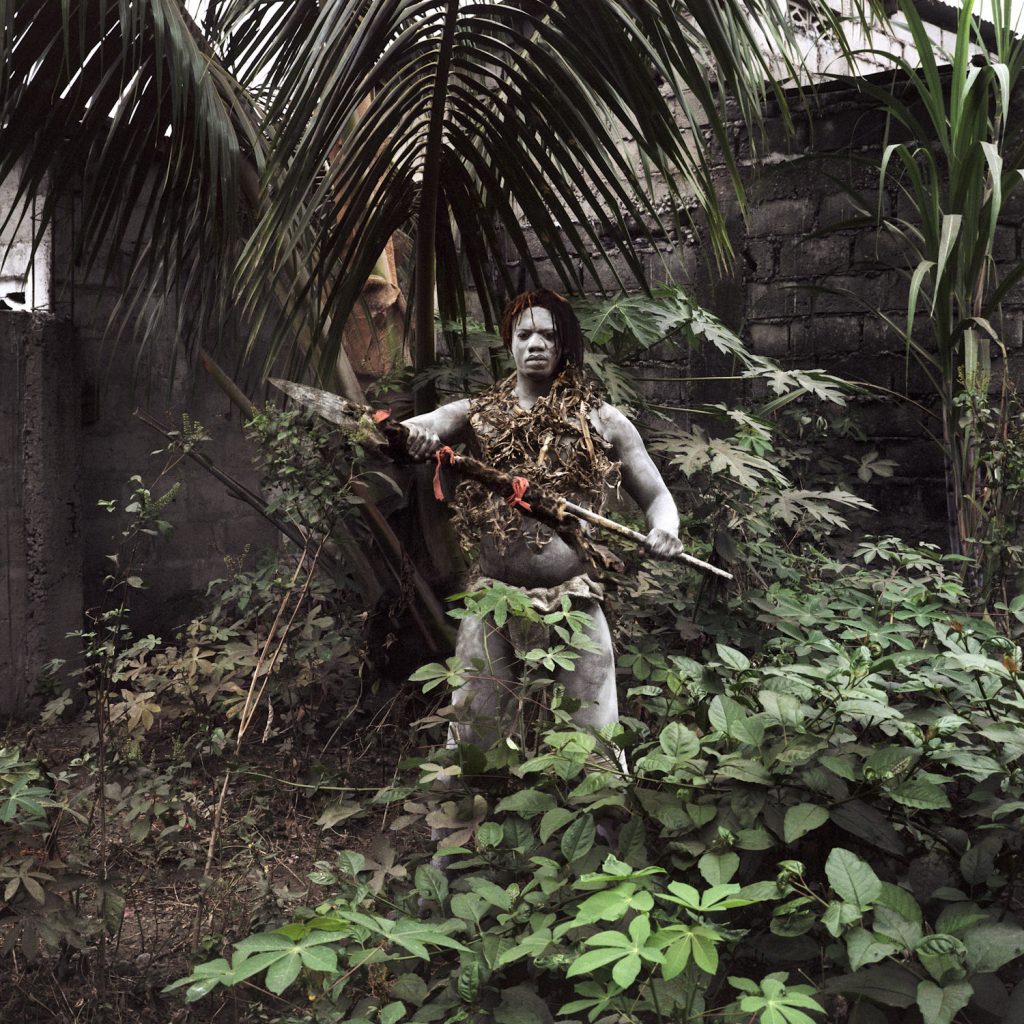
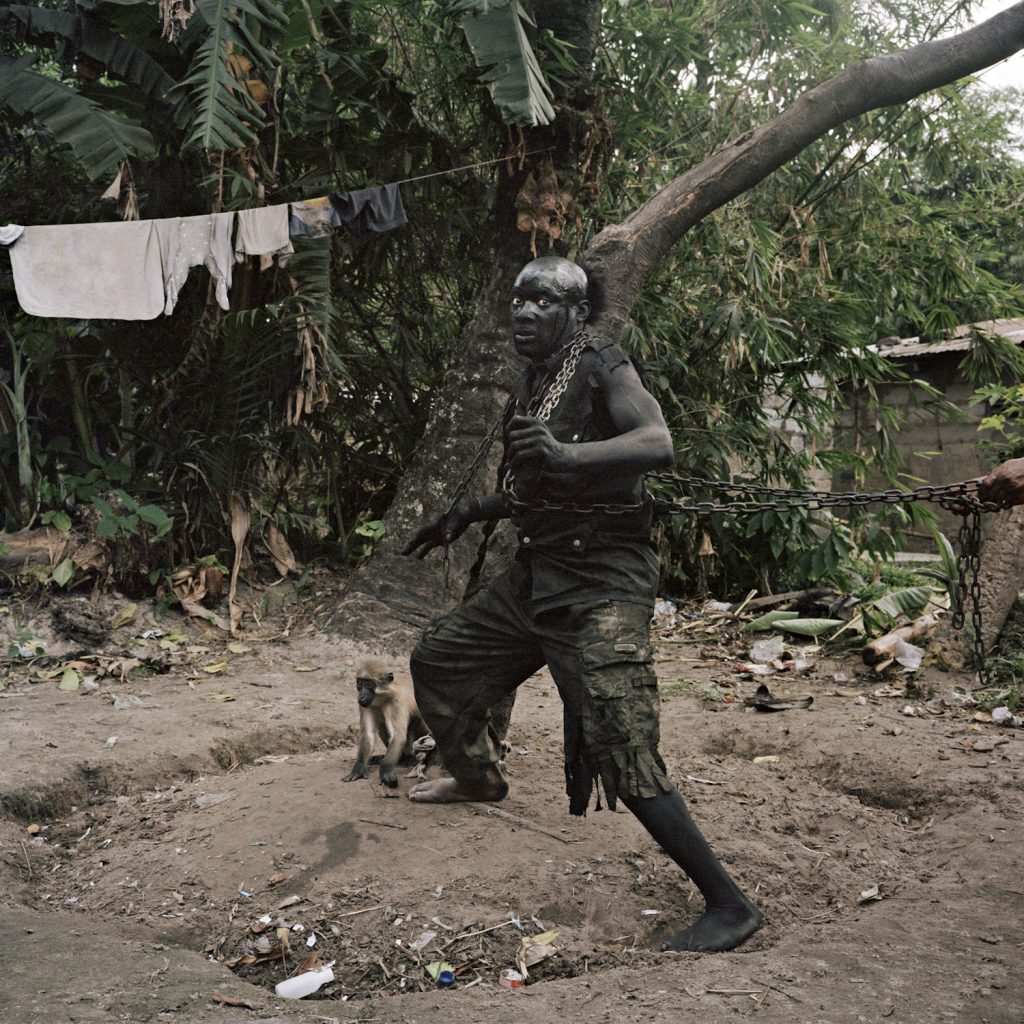
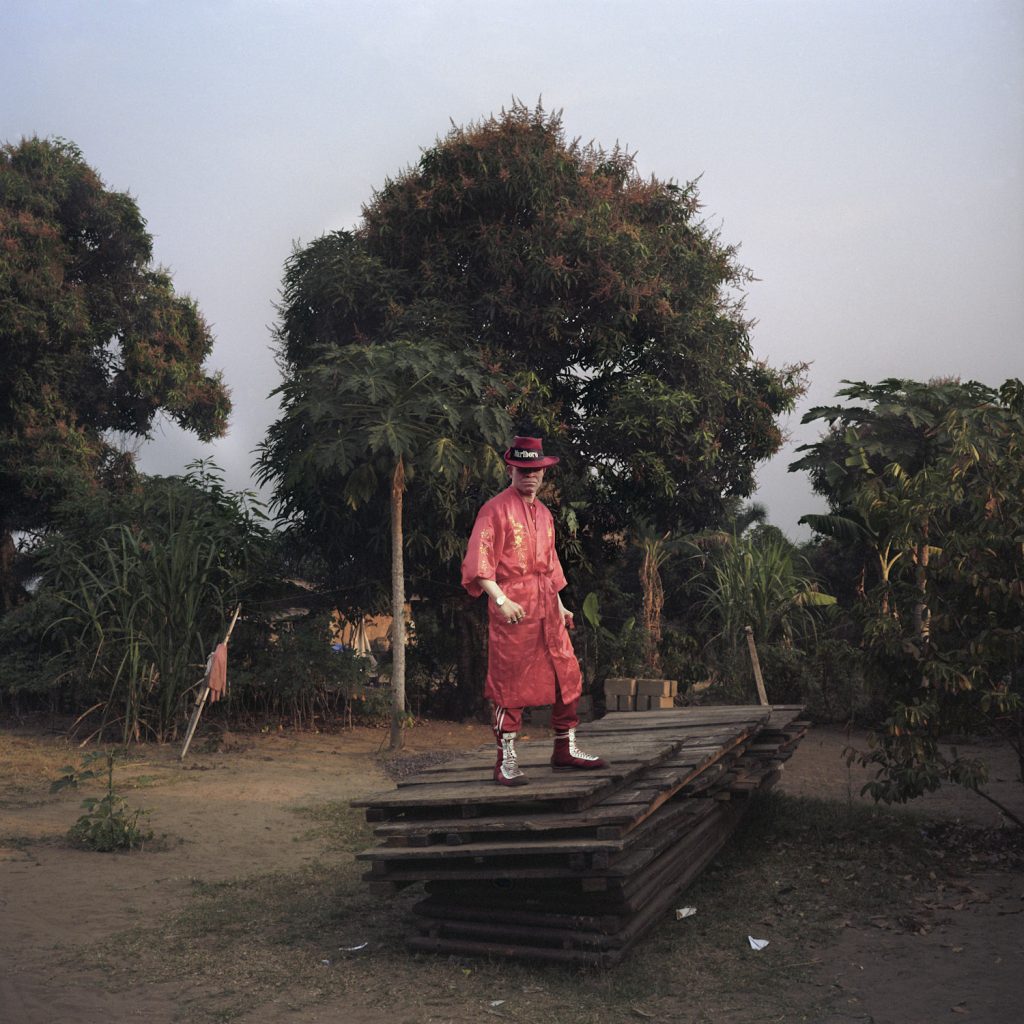
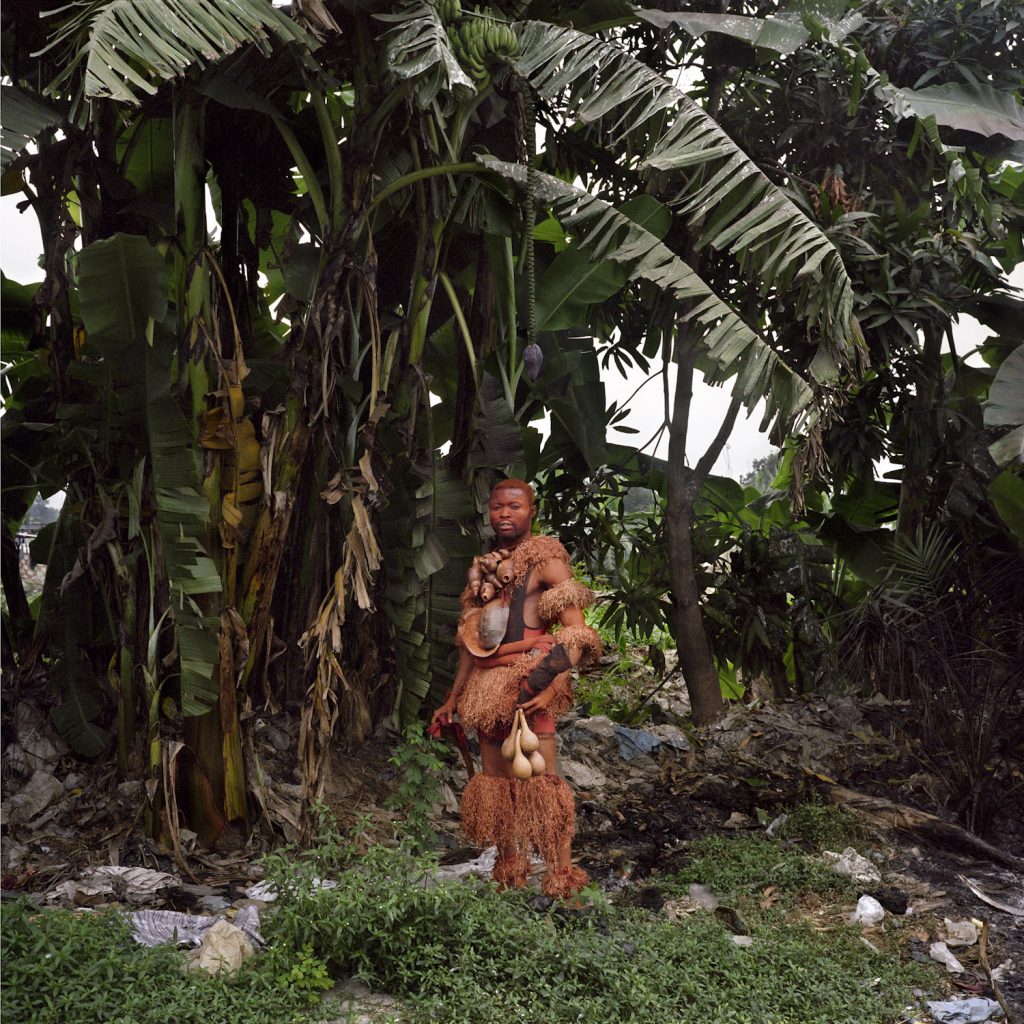
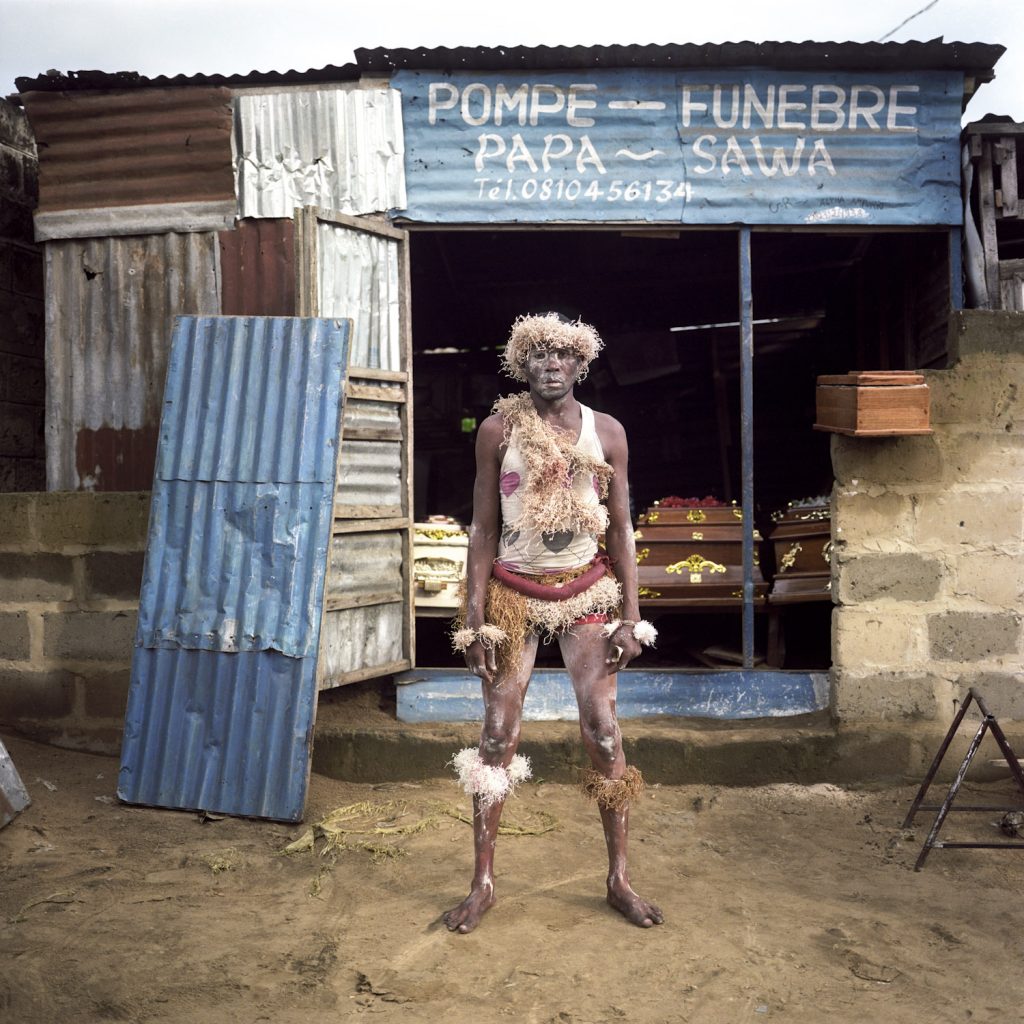
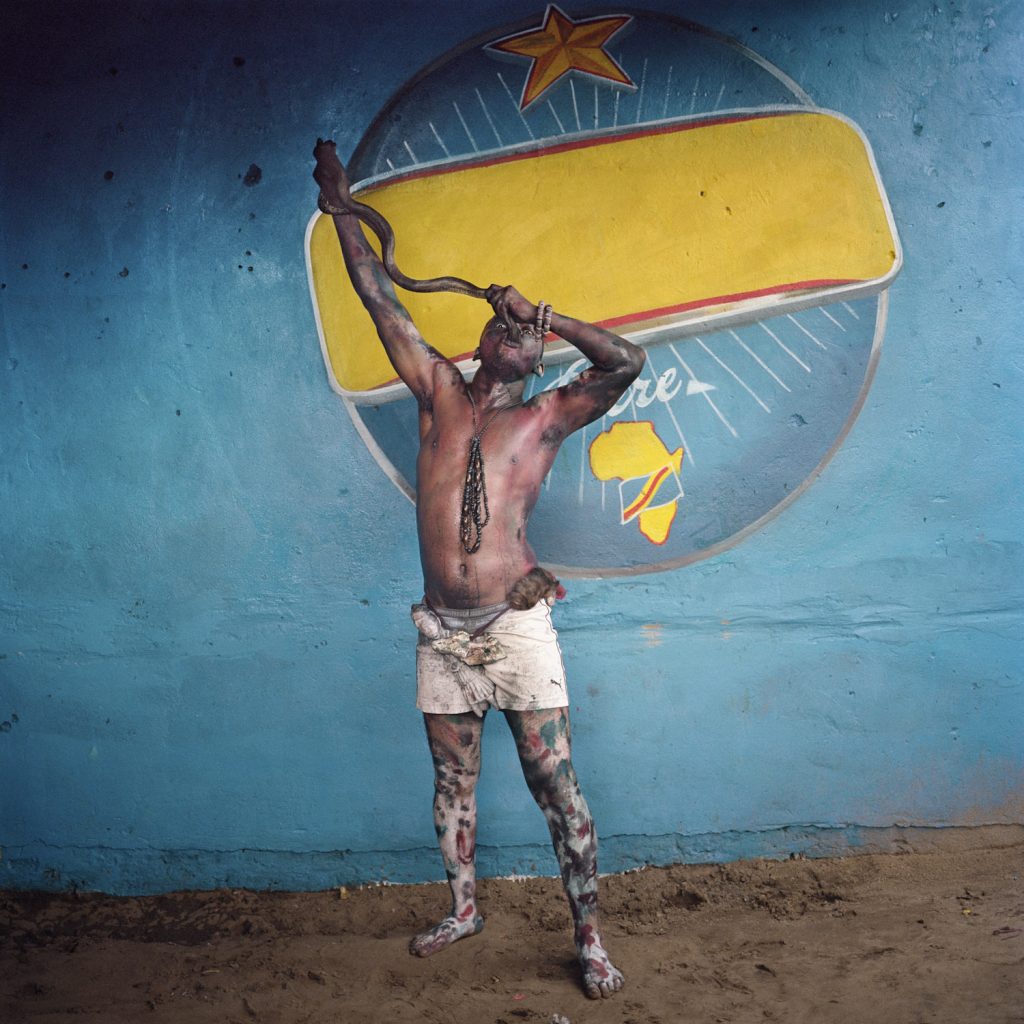
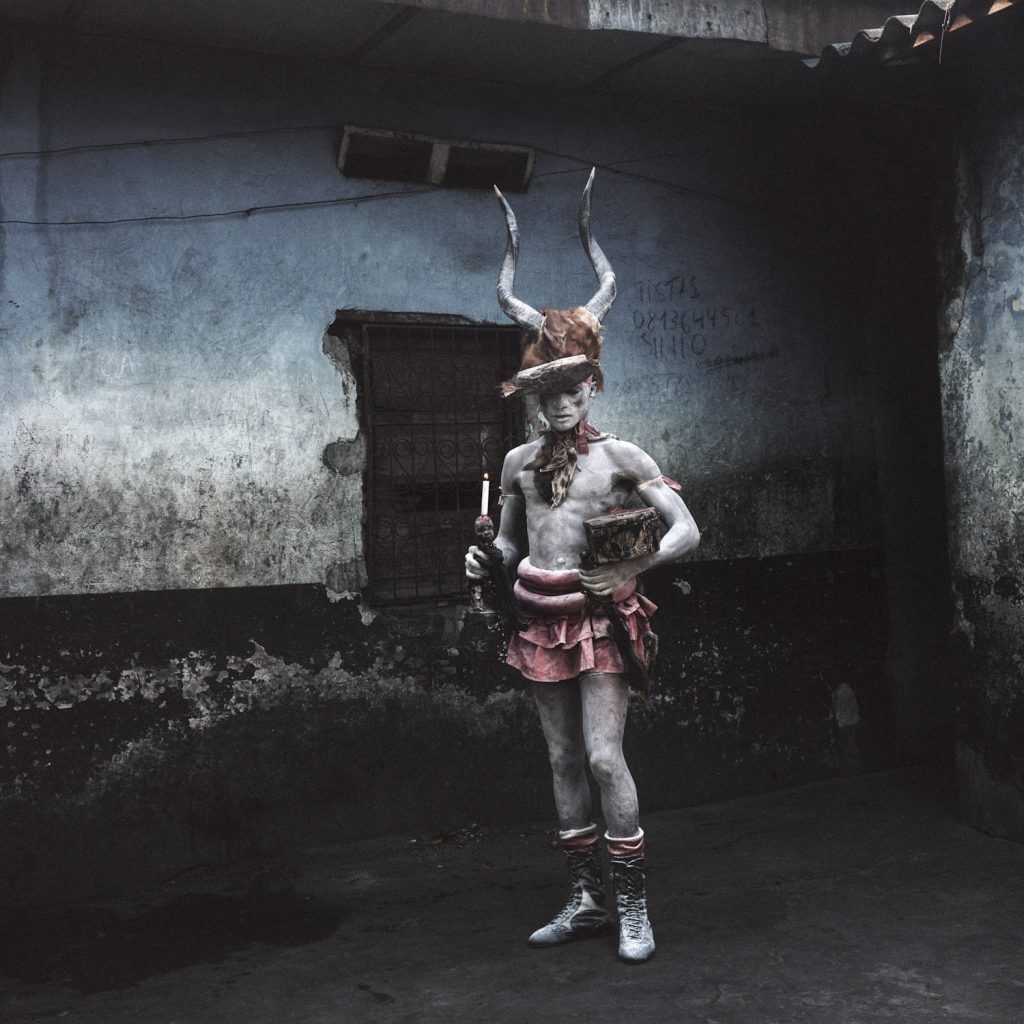
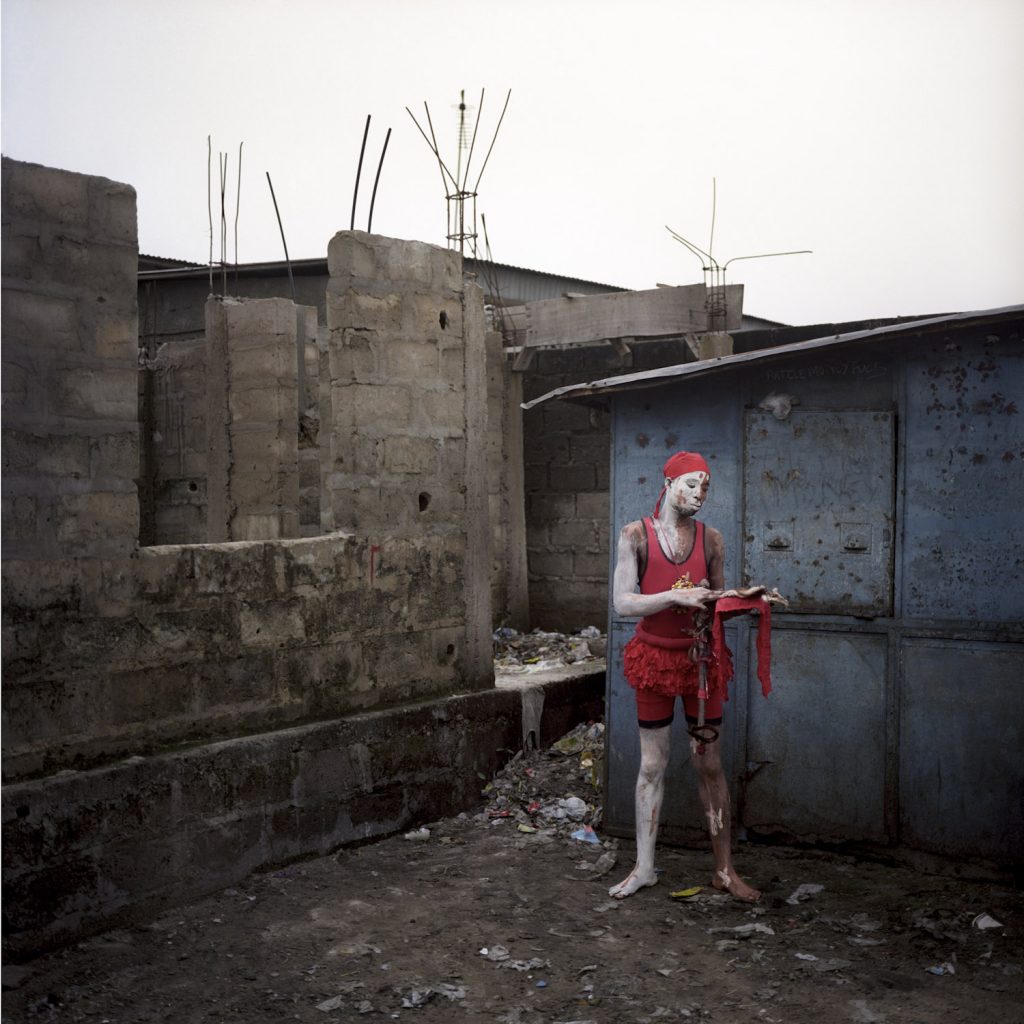
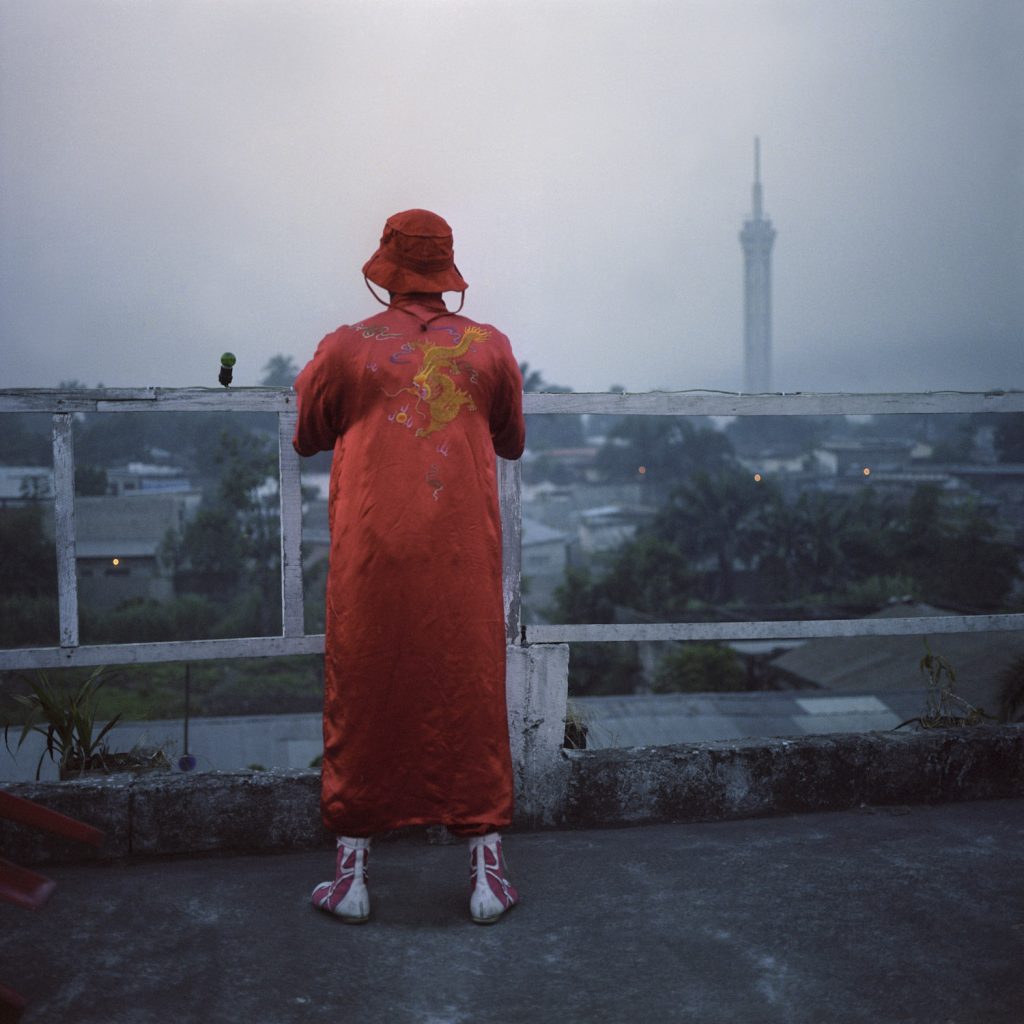
NO WEAPON THAT IS FORMED AGAINST ME SHALL PROSPER
Like a drunkard, night has fallen on Kinshasa. On the paved esplanade adjoining Mzée Kabila market, in the uncertain outskirts of the capital where ten million Congolese live inclose proximity, Six Bolites pulls on his starry cloth mask and climbs onto the hood of a war-torn van. To the sound of local musicians perched on top of an old banger painted in the national colours, bunches of kids and passersby from the suburbs of Massina, Ngili or Matete join the procession and chant his name a long with those of the other wrestlers who will confront each other once again this evening.
Kinshasa is like a storm on a lake of lava. Muimba Texas, Mabokotomo,Petit Cimetière and États-Unis are still the most striking expression of this daily fury. These men, taxi-drivers, street peddlers and, for the most fortunate, bodyguards, are the new heroes of the city’s nightlife. Their charisma commands respect and instils fear – two major assets in a city as busy and competitive as Kinshasa.
In the last few hours of daylight when they have managed to pull themselves away from their daily routines, they slip on masks and costumes to defy those, who like themselves, thirst for glory. When the time of the fight rings out they walk headfirst into a different world, into a fantasy life where all is possible.
The surrounding poverty and the daily risks disappear as the show begins. In the 1970s, RTNC, the Congolese national radio and television network, broadcast bouts of American wrestling. Very quickly, these created new vocations: Congolese wrestlers added their own fetish- led co lour to this technical and spectacular sport. A few years later, the terrifying Edingwe, Puma Noir and Kele Kele could be seen on TV. Their b lack magic would leave its mark on a whole generation. Thanks to their fetishes, they would rip out their adversaries’ guts, swallow their eyes or make them vanish completely. Former Tribal fineries enhanced the spectacle. Witchdoctors’ adornments took on a different meaning. Headdresses with horns and body paint complimented elements taken from American culture and Christianity. Gowns, crosses and chap lets began to appear. The three universes intertwined in a Baroque
like fashion with the fighters’ half-threatening, half-comical face pulling evoking more the masks and fools of the Commedia de ll’arte than World Wrestling Entertainment shows.
This mystical ballet, bounded by the four ropes of the ring, represents an un likely blend of traditional dance and American sporty show business. The Congolese have united two separately distinguishable disciplines to create a brand new one: Fetish-wrestling, not only a sport but an art. Almost a religion.